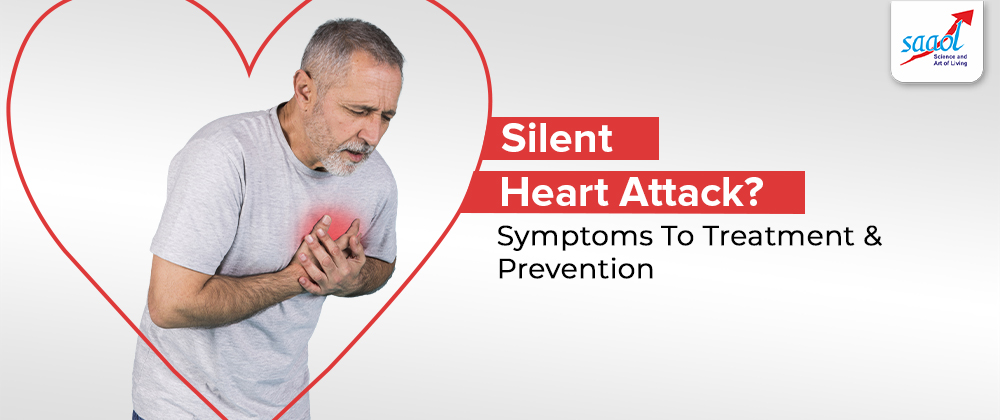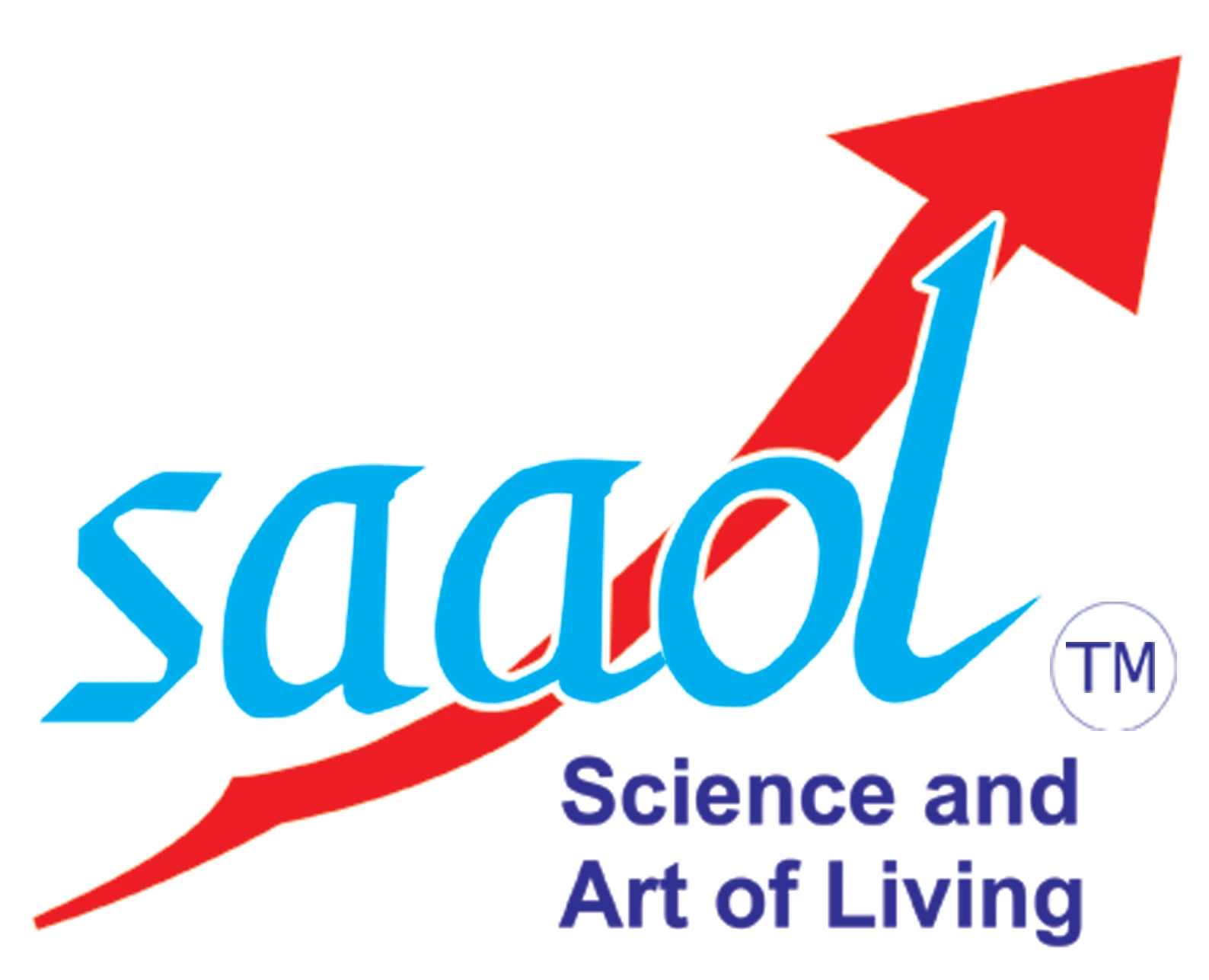Silent Heart Attack: Symptoms To Treatment & Prevention
SAAOL
- March 25, 2023
- 6 Min Read

What is a silent heart attack?
The term “silent heart attack” (or “silent myocardial infarction, or “SMI”) refers to a heart attack that has no clear symptoms. Because the symptoms are either undetectable or mild enough to be mistaken for other conditions, it is commonly referred to as a “silent” heart attack.
According to research, up to 45% of heart attacks go undetected. Silent heart attacks can nonetheless be harmful despite their absence of visible symptoms. A silent heart attack can harm as much as a normal heart attack. This blog will cover the causes, risk factors, treatments like EECP therapy, diagnosis, prevention, and symptoms of silent heart attacks.
Symptoms of a Silent Heart Attack
A silent heart attack frequently has no symptoms, as was already described. Some people might not even be aware they’ve had a heart attack until one is discovered via standard medical examinations, like an electrocardiogram (ECG) or blood test.
Some people may see silent heart attack symptoms like:
- Pain in chest, arms, or jaw
- Malaise
- Shortness of breath
- Feel weak or tired.
- Vomit or nausea
- Dizziness or lightheadedness
- Sweating
- Difficulty in sleeping
It is important to understand that these symptoms may not be the signs of a heart attack and can be caused by other things.
Possible causes of a silent heart attack
When the blood supply to the heart muscle is cut off or significantly decreased, the heart muscle cells suffer damage or even die, resulting in a silent heart attack.
It can also be caused by the same factors that contribute to a normal heart attack. These include:
- Ischemic heart disease – plaque accumulation in the coronary arteries causes this disease to develop.
- Coronary artery disease – a disorder where a buildup of cholesterol and other chemicals causes the arteries that carry blood to the heart to constrict or become clogged.
- Exposure to freezing cold
- High Blood Pressure
- Obesity – too much weight can increase the risk of heart disease and put stress on the heart.
- Family history – chance of suffering a heart attack may increase if your family has a history of heart disease.
- Smoking – harms blood vessels and raises the risk of a heart attack.
- Diabetes – Diabetic people have a higher chance of developing heart disease.
What increases the risk of a silent heart attack?
While there are many risk factors and some put you at a higher risk of a heart attack. Some can be changed but some are unchangeable. First, we will discuss the factors that can be changed:
- No exercise routine
- Age
- High blood pressure
- Hypertension
- High cholesterol
- Diabetes
- Tobacco Dependence
- Obesity
- Too much stress
With the help of medicines, lifestyle modification, and changes in diet and mindset, these things can be solved but below are the things that cannot be changed.
- Having a family history of heart disease
- Having pregnancy-related pre-eclampsia
- Exceeding the age of 45 (males)
- Being older than 55 or postmenopausal (females)
- Being COVID-19 infected
Diagnosing a silent heart attack
Since there are no observable signs, diagnosing a silent heart attack can be difficult. A silent heart attack can be identified using several tests, like:
- Electrocardiogram (ECG) – a test that captures the electrical activity of your heart and can find anomalies that could be signs of a heart attack.
- Blood tests: A blood test can identify the enzymes generated when the heart is injured.
- Cardiac MRI: This examination can identify cardiac muscle injury by using magnetic fields and radio waves to produce precise images of the heart.
- Echocardiogram – a test that uses sound waves to provide an image of your heart and can find regions of damage.
- CT Scan
- Physical Examination
- Nuclear Stress Test
- Exercise Stress Test
Treatment
A silent heart attack is also treated just like a normal heart attack. The objective is to minimize harm by immediately restoring blood flow to the heart. It can be done through EECP therapy and the use of medications like aspirin and nitroglycerin. To treat a silent heart attack, you should immediately get the following things done:
- EECP therapy: According to studies, EECP therapy significantly improved exercise tolerance in silent myocardial ischemia patients as well as decreased the frequency and intensity of angina symptoms. Other studies revealed that EECP therapy enhanced endothelial function, which is essential for the onset of atherosclerosis, a condition in which artery plaque builds up and can cause heart attack and stroke.
- Medicines: These include blood thinners, aspirin, beta-blockers, or nitroglycerin to stop blood clots.
- Lifestyle changes: Making changes to your way of life, such as eating a zero-oil diet, exercising frequently, giving up smoking, and managing stress, can help you avoid heart attacks in the future.
- Oxygen Therapy
- Cardiac Stress Testing
Fast Recovery
After treatment, you have to do the following to witness the full benefits of the treatment. You must take the medications suggested by your doctor along with some lifestyle changes. These could include:
- Anticlotting medications
- ACE inhibitors
- Beta-blockers
- Fish oil
- Anticoagulants
How to Prevent?
Following are the lifestyle changes that must not be forgotten as they will minimize your risk of a heart attack in the future. These should include:
- Strictly following zero-oil cooking
- Exercising regularly
- Managing weight
- Avoid stress
- Abandon tobacco products
- Taking care of other medical issues
- Constantly measuring cholesterol and blood pressure
- Reporting unexpected symptoms to a doctor
- Eating a diet rich in fruits, vegetables, and whole grains
Conclusion
In conclusion, a silent heart attack is a specific kind of heart attack that doesn’t have the typical symptoms. They are more frequent than you might imagine, and the risk rises with age and other conditions including high blood pressure, high cholesterol, diabetes, and smoking. Routine medical exams can identify silent heart attack symptoms, though diagnosing one might be difficult. Treatment involves EECP therapy, restoring blood flow to the heart, and prevention is the best way to avoid a silent heart attack.
However, following the above steps—which include changes in your lifestyle and taking care of other medical issues—can help lower your risk of developing heart disease and stop a silent heart attack. Visit SAAOL Heart Center as soon as possible if you experience even a single one of the minor signs of a silent heart attack. By taking the appropriate care and precautions, you can lower your risk of having a silent heart attack and maintain long-term heart health.
